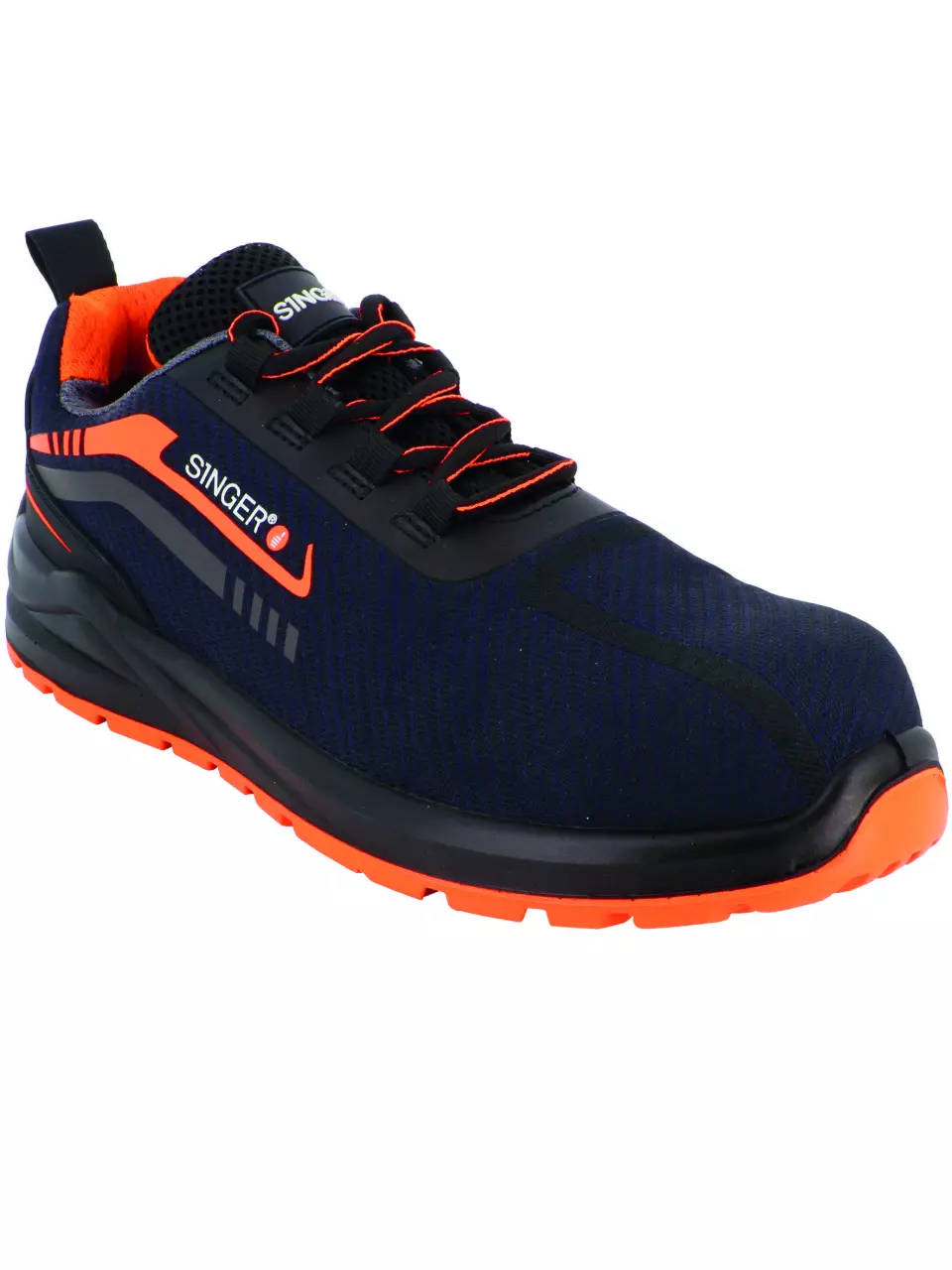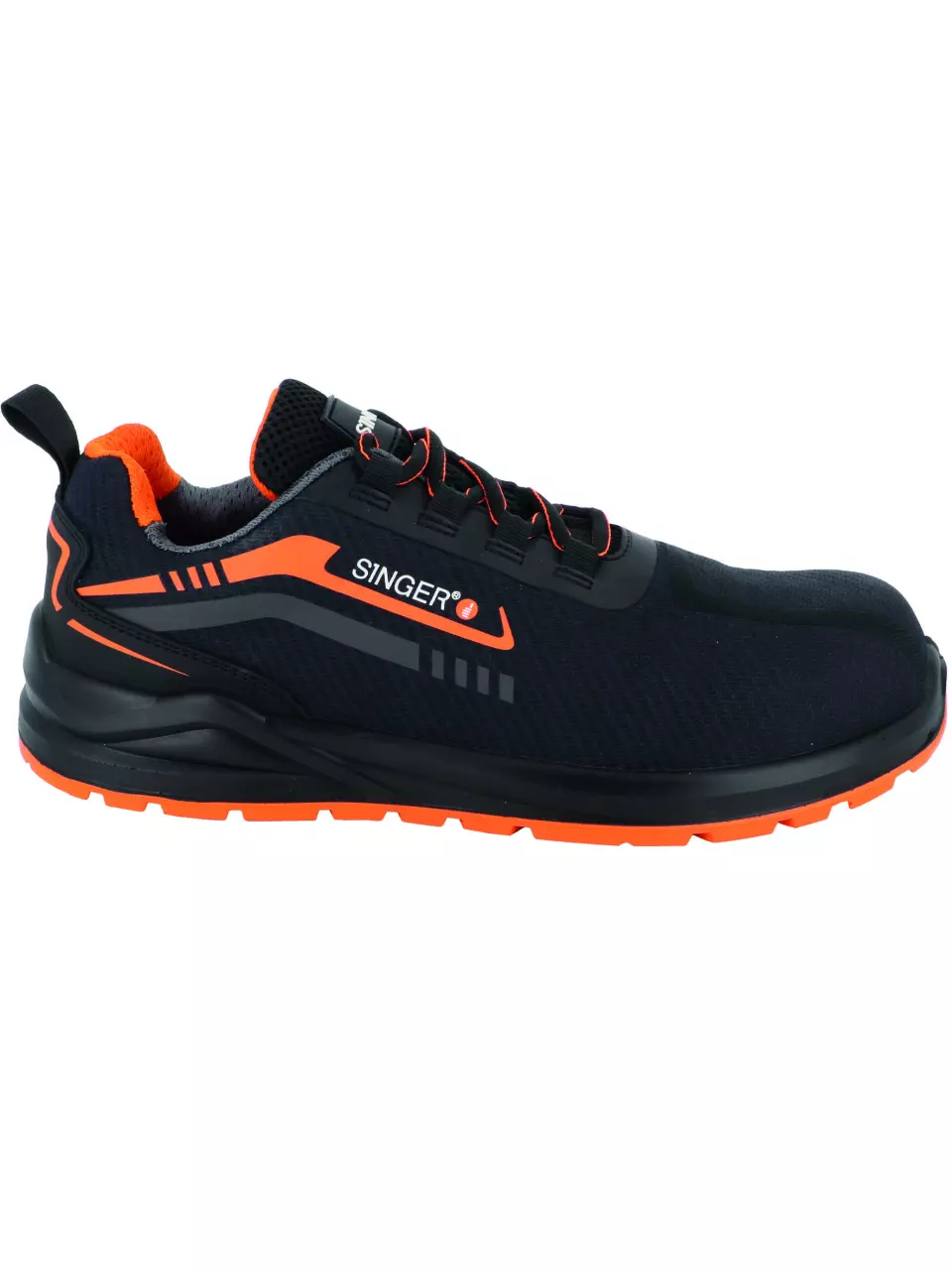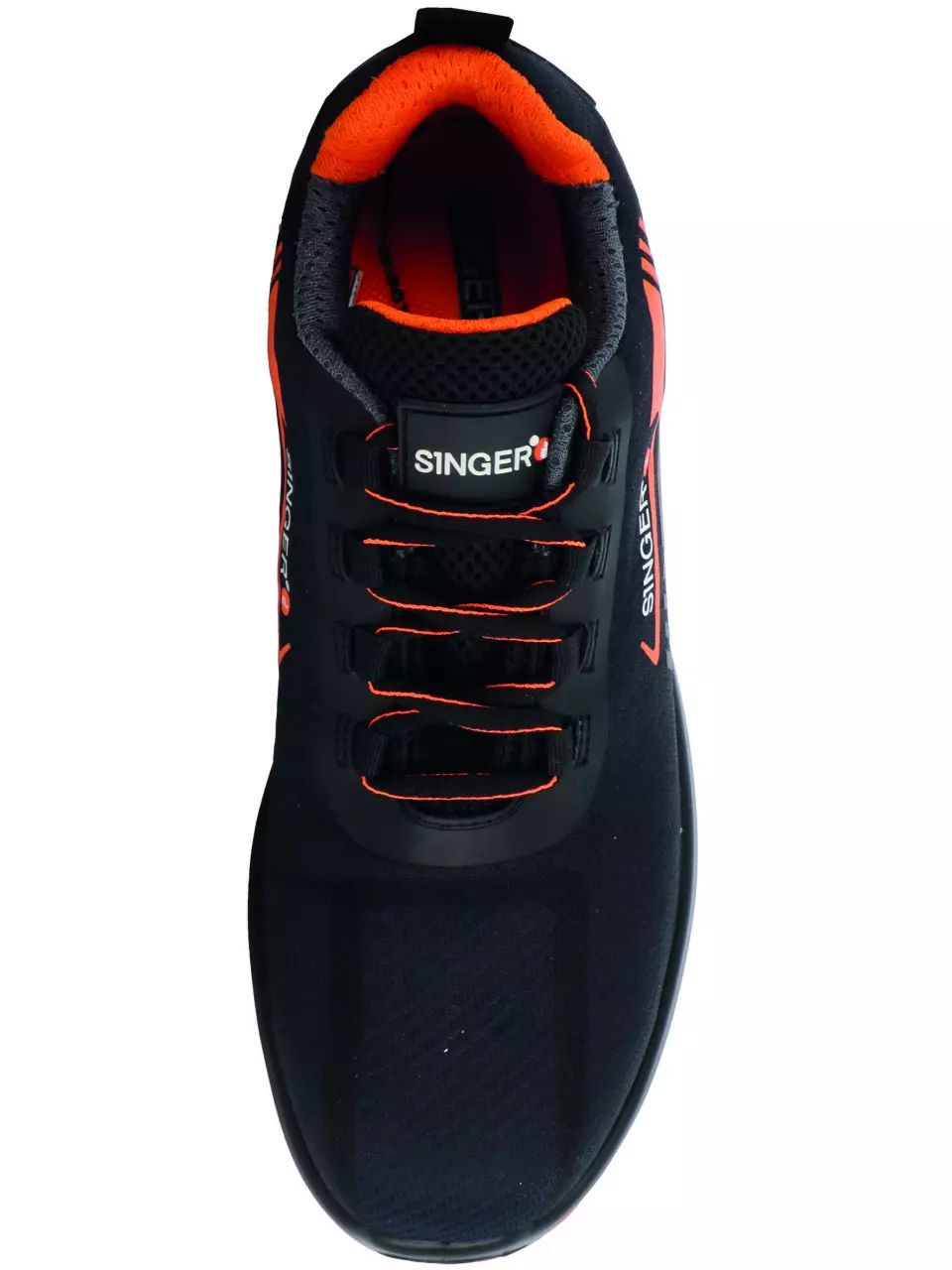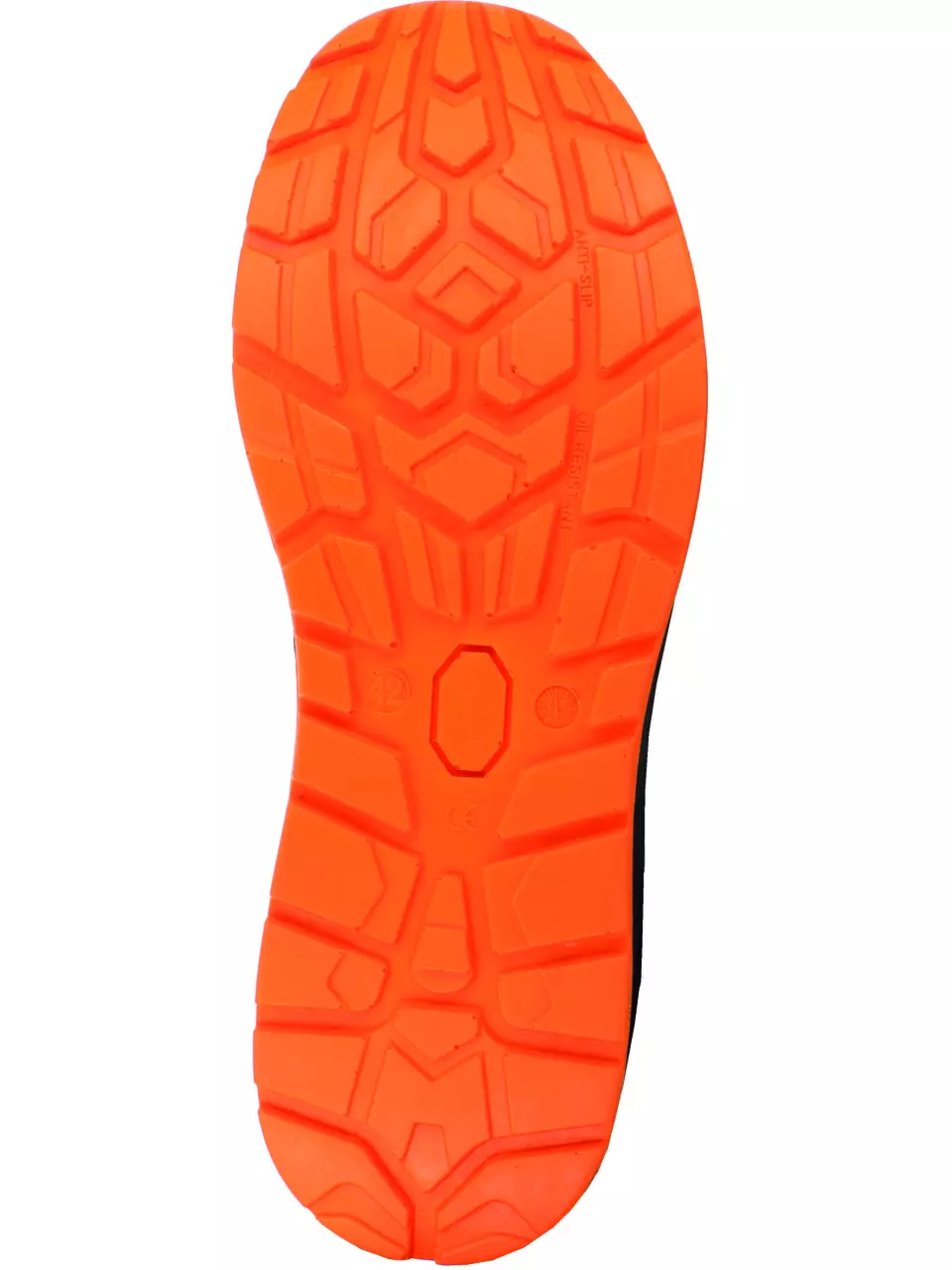Singer Safety Low Safety Shoe, S1 PS FO SR
SINGER Safety
visit storeProduct description
These metal-free low-cut safety shoes provide exceptional protection and comfort for various industrial environments. Featuring a composite shockproof toe cap and high tenacity textile pierce-resistant midsole, they offer comprehensive foot protection while maintaining flexibility. The ergonomic design with comfortable padding and double-density polyurethane sole ensures all-day wearability for professionals in demanding work settings.
Product Features:
- Metal-free construction for use in environments with metal detectors
- Composite shockproof toe cap providing 200J impact protection
- High tenacity textile pierce-resistant midsole for flexibility and safety
- Comfortable padded tongue with gusset for improved fit
- Reinforced polyester upper for durability
Technical Details:
- Textile lining for comfort
- Ergonomic insole in preformed PU
- Polyurethane double-density sole
- Weight: 550g (average weight of size 42 shoe)
- EN ISO 20345:2022 (S1 PS FO SR) certified
Recommended Applications:
- Light industry
- Finishings
- Maintenance
- Transport
- Logistics
Standards:
- European Regulation (EU) 2016/425 on Personal Protective Equipment (PPE)
- Category II certification by TUV RHEINLAND (notified body n°0197)
EAN: 3660514256866, 3660514256897, 3660514256927, 3660514256958, 3660514256989, 3660514256651, 3660514256682, 3660514256712, 3660514256743, 3660514256774, 3660514256804, 3660514256835
Enhances stability on slick surfaces, reducing the risk of slips and falls. Designed for reliable grip and secure footing in various work environments.
Withstands degradation from oil exposure, maintaining sole integrity and extending shoe life. Ensures reliable traction in oily environments.
Reduces impact on feet and joints, lessening fatigue during long hours on hard surfaces. Provides enhanced comfort for demanding work environments.
Indicates whether the footwear has protective reinforcement (Safety) or no special toe protection (Plain), affecting workplace safety compliance and injury prevention.
The material composition of the shoe's bottom portion that determines slip resistance, durability, and protection against workplace hazards like chemicals, heat, or punctures.
Describes the design of the shoe's ankle opening, which affects comfort, how easy they are to put on, and protection against debris during long work shifts.
Identifies the protective material in the toe cap that shields against impacts and compression. Different materials offer varying levels of protection, weight, and comfort.
The color of the shoe's bottom surface that affects visibility in low-light conditions, complements uniform requirements, and reflects personal style preferences.
The method used to secure the shoe to your foot, affecting ease of putting on/removing, adjustability for comfort, and workplace safety.
- Electrical Protection
- Slip Resistant
- Impact Resistance
Request a free sample
Test first and buy later. Visit any product page to request your free sample.
Standards and labels
Test results
General Requirements CRThe standard EN ISO 20345:2011 encompasses general requirements for safety footwear to ensure they provide adequate protection in various occupational environments. Rating 'CR' signifies that the footwear has a cut resistant upper ensuring enhanced protection. The test method involves assessing the material's resistance to splitting or cracking under certain conditions, which simulates real-world industrial hazards involving sharp objects or surfaces. Practically, this result ensures that the footwear is suitable for environments where there is a risk of materials splitting or getting caught, thereby providing essential safety benefits to the user.
General Requirements EThe standard EN ISO 20345:2011 encompasses general requirements for safety footwear to ensure they provide adequate protection in various occupational environments. The specification of test result E indicates that the footwear has undergone and successfully met the electrical insulation performance requirements. This specific test assesses footwear's ability to prevent electrical current from passing through the body from the ground, a critical safety feature for those working in environments with electrical hazards. The test involves placing the footwear on a conductive surface and measuring the resistance when a specified voltage is applied, thereby ensuring the footwear provides the necessary protection against electrical hazards. This result is significant for safety footwear, guaranteeing wearer protection in electrical environments and reducing the risk of electrocution, thus contributing to safety standards compliance for occupational footwear in the European market.
General Requirements AEN ISO 20345:2011 sets standards for safety footwear intended for professional use, ensuring that such footwear provides adequate protection according to specified safety requirements. Rating A means the footwear has antistatic proterties. The practical implication of an A rating result is that the footwear is certified as having met the necessary conditions for standard professional use, which can reassure procurement professionals of the product's basic safety compliance specific to an industrial or harsh working environment. Such comprehensive testing and certification mean that businesses can ensure worker safety and regulatory compliance when procuring such footwear.
General Requirements S1The designation S1 under the EN ISO 20345:2011 standard signifies a basic level of safety footwear which includes several important features. Specifically, a footwear labeled as S1 has 200 joules toe cap, fully enclosed heel, anti-static protection, and energy absorption in the heel. The testing method to confirm the S1 classification generally involves specific conditions and apparatus to measure the effectiveness of the footwear under these criteria. For instance, the heel energy absorption is often tested by dropping a weight onto the heel and measuring the force transmitted through the footwear to simulate real-world impacts during usage. Meeting the S1 requirement implies that the footwear can adequately protect users in environments where static electricity, basic impacts, and exposure to fuel-related chemicals are a concern. This tag therefore allows safety managers and procurement professionals to match footwear to known workplace hazards, ensuring a suitable level of protection for employees in varied industrial settings.
General Requirements FOThe standard EN ISO 20345:2011, specifically its General Requirement FO, pertains to footwear containing fuel oil-resistant outsoles. When footwear under this specification successfully meets the FO requirement, it implies that the footwear's outsole has been tested and confirmed to resist degradation due to contact with fuel oil. The test involves exposing the outsole material to fuel oil for a determined period, typically 22 hours, at a controlled temperature of 22°C. This test assesses the change in volume and properties of the outsole following fuel oil exposure by measuring its tensile strength and elongation before and after the exposure. For procurement professionals, a positive FO result indicates that the footwear's outsole will maintain its mechanical performance and integrity when in contact with fuel oil, making it suitable for industries where oil exposure is frequent, providing durability and reliable performance under such conditions.
Test results
Service Reliability PassedEN ISO 9001:2015 is a globally recognized standard that specifies requirements for a quality management system (QMS), focusing on numerous aspects of quality management in organizations, aiming to enhance customer satisfaction through the effective application of the system. The 'Service Reliability' with a 'Passed' designation indicates that an organization has successfully demonstrated its ability to consistently provide services that meet customer and regulatory requirements while aiming for continual improvement. This assessment involves evaluating various elements of the QMS including service planning, execution, and monitoring, to ensure reliability and performance consistency. The practical implications for organizations that pass this aspect of the standard are significant; it establishes them as reliable providers in their industry, enhancing customer trust and satisfaction, and potentially leading to increased business and a competitive advantage.
CE Marking is a label that shows a product meets certain safety and environmental standards set by the European Union. To get the CE Marking, a company must test and certify their product meets these standards. CE Marking is required for many products sold in the EU, including electronics, machinery, toys and medical devices. It helps ensure that products are safe for consumers and the environment, and allows for easy trade within the EU.
PPE stands for "personal protective equipment." PPE Category 2 refers to equipment that is more complex, and has a higher level of risk. Examples of PPE Category 2 include safety helmets, ear protection, and fall arrest equipment. In Europe, PPE Category 2 must meet certain safety standards set by the European Union, which means that it must be designed and manufactured to protect the user without causing harm. Companies that make or sell PPE must prove that it meets these standards. They also must have a quality management system in place and have to be audited regularly by a notified body.
Textiles are materials made from fibers, such as cotton, wool, or polyester. In Europe, there are rules for how textiles should be made, sold, and labeled. These rules are set by the European Union. These rules ensure that textiles are safe and do not contain harmful chemicals, that they are labeled correctly and that the use of certain dangerous chemicals are banned. These rules are set to protect the health and safety of consumers and the environment. Companies that make or sell textiles in the EU must comply with these rules.
SINGER Safety delivery terms
Free delivery when you order more than 150,00 € from SINGER Safety
Supplier shipping fee 6,68 €
Brand minimum 200,00 €
37,61 €
Shipping fee is 6,68 € for orders under 150,00 €
Sold in units of one pair
Need larger quantities?
Other products you may like
Recently viewed
Need help?
Get help from our experts
Other products you may like
Similar products you may like
Recommended for you
SINGER Safety
Delivery time: 4 business days
Orders from 200,00 €
Supplier shipping fee 6,68 €
Free shipping on orders over 150,00 €



Find +150,000 products from hundreds of brands
Autonomous sourcing platform
The most efficient way to source and order supplies for your operations
Sourcing
Ordering
List products you’re looking for and we’ll find the best products and prices for you – all for free.
Need help?
Get help from our experts



